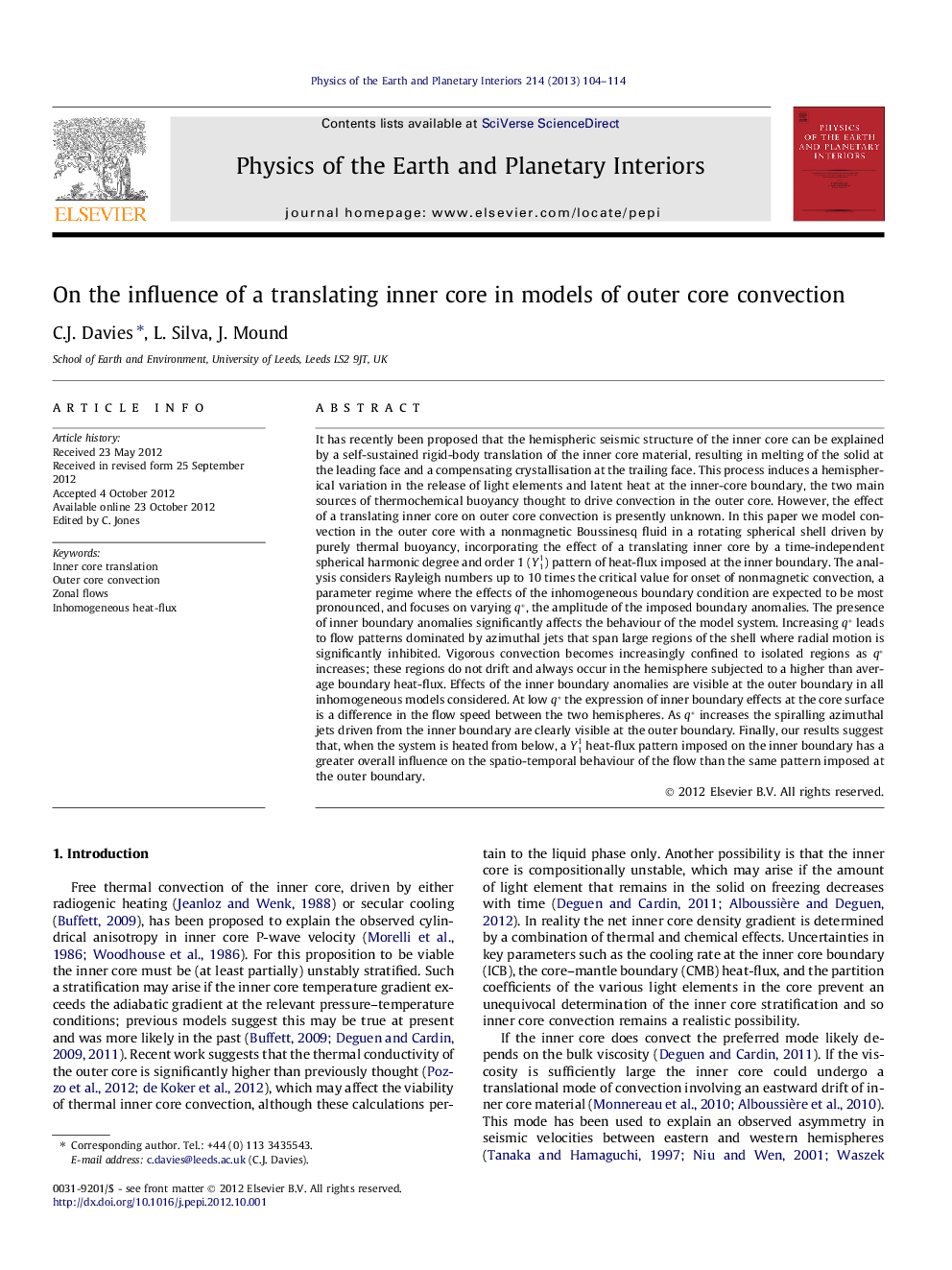| Article ID | Journal | Published Year | Pages | File Type |
|---|---|---|---|---|
| 4741760 | Physics of the Earth and Planetary Interiors | 2013 | 11 Pages |
It has recently been proposed that the hemispheric seismic structure of the inner core can be explained by a self-sustained rigid-body translation of the inner core material, resulting in melting of the solid at the leading face and a compensating crystallisation at the trailing face. This process induces a hemispherical variation in the release of light elements and latent heat at the inner-core boundary, the two main sources of thermochemical buoyancy thought to drive convection in the outer core. However, the effect of a translating inner core on outer core convection is presently unknown. In this paper we model convection in the outer core with a nonmagnetic Boussinesq fluid in a rotating spherical shell driven by purely thermal buoyancy, incorporating the effect of a translating inner core by a time-independent spherical harmonic degree and order 1 (Y11) pattern of heat-flux imposed at the inner boundary. The analysis considers Rayleigh numbers up to 10 times the critical value for onset of nonmagnetic convection, a parameter regime where the effects of the inhomogeneous boundary condition are expected to be most pronounced, and focuses on varying q∗q∗, the amplitude of the imposed boundary anomalies. The presence of inner boundary anomalies significantly affects the behaviour of the model system. Increasing q∗q∗ leads to flow patterns dominated by azimuthal jets that span large regions of the shell where radial motion is significantly inhibited. Vigorous convection becomes increasingly confined to isolated regions as q∗q∗ increases; these regions do not drift and always occur in the hemisphere subjected to a higher than average boundary heat-flux. Effects of the inner boundary anomalies are visible at the outer boundary in all inhomogeneous models considered. At low q∗q∗ the expression of inner boundary effects at the core surface is a difference in the flow speed between the two hemispheres. As q∗q∗ increases the spiralling azimuthal jets driven from the inner boundary are clearly visible at the outer boundary. Finally, our results suggest that, when the system is heated from below, a Y11 heat-flux pattern imposed on the inner boundary has a greater overall influence on the spatio-temporal behaviour of the flow than the same pattern imposed at the outer boundary.
► Convective translation of the inner core drives outer core convection non-uniformly from below. ► We model inner core translation as a lower boundary condition in outer core convection simulations. ► Inner core translation significantly influences outer core flow. ► The influence of inner core translation is visible at the top of the outer core.
